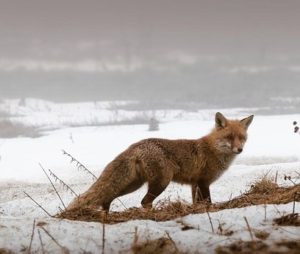Go offline with the Player FM app!
Episode 534 – Companion Animal Behavior and the Russian Farm Fox Study
Manage episode 285209322 series 1104355
 Few studies have shaped my understanding of companion animal behavior and the bond as much as the decades-long Russian Farm Fox study. I felt that way when I first read about it in the 90s and still feel the same about it today. Back then I considered it a virtual Rosetta Stone relative to understanding the inextricable relationship between domestication, animal behavior and physiology.
Few studies have shaped my understanding of companion animal behavior and the bond as much as the decades-long Russian Farm Fox study. I felt that way when I first read about it in the 90s and still feel the same about it today. Back then I considered it a virtual Rosetta Stone relative to understanding the inextricable relationship between domestication, animal behavior and physiology.
But I also realized that domestication and all the physiological and behavioral changes it created was first and foremost a bond phenomenon, These were fueled by human and animal changes, not just changes in the animals. The researchers and foxes in the study had to be willing to engage with each, to change their behaviors in some way to accommodate each other.
Because the study focused only on the foxes, we don’t know whether the researchers experienced comparable changes during these relationships. But it seems highly likely. If this process occurred, how far it progressed, and its results also depended on the physical and mental environments in which these human-animal interactions occurred.
Those same factors influence us and our companion animals today. We may have different physiological, emotional, and environmental bonds with each of them, depending on what we perceive as their and our own needs. And they may do the same as they interact with us.
When I originally recorded this, Frica and Ollie were young, there was a canary, a geriatric cat, and a physiological, behavioral, and a physiological behavior, health, and bond wildcard named BeeBee in our household. (You can read more about BeeBee’s and our bittersweet time in The BeeBee Chronicles – read from bottom up) Today, Frica, Ollie, Bamboo and I experience those same human-companion animal dynamics as they play out here as we adjust to changes in today’s world.
canary, a geriatric cat, and a physiological, behavioral, and a physiological behavior, health, and bond wildcard named BeeBee in our household. (You can read more about BeeBee’s and our bittersweet time in The BeeBee Chronicles – read from bottom up) Today, Frica, Ollie, Bamboo and I experience those same human-companion animal dynamics as they play out here as we adjust to changes in today’s world.
The post Episode 534 – Companion Animal Behavior and the Russian Farm Fox Study appeared first on MMilani.com.
22 episodes
Manage episode 285209322 series 1104355
 Few studies have shaped my understanding of companion animal behavior and the bond as much as the decades-long Russian Farm Fox study. I felt that way when I first read about it in the 90s and still feel the same about it today. Back then I considered it a virtual Rosetta Stone relative to understanding the inextricable relationship between domestication, animal behavior and physiology.
Few studies have shaped my understanding of companion animal behavior and the bond as much as the decades-long Russian Farm Fox study. I felt that way when I first read about it in the 90s and still feel the same about it today. Back then I considered it a virtual Rosetta Stone relative to understanding the inextricable relationship between domestication, animal behavior and physiology.
But I also realized that domestication and all the physiological and behavioral changes it created was first and foremost a bond phenomenon, These were fueled by human and animal changes, not just changes in the animals. The researchers and foxes in the study had to be willing to engage with each, to change their behaviors in some way to accommodate each other.
Because the study focused only on the foxes, we don’t know whether the researchers experienced comparable changes during these relationships. But it seems highly likely. If this process occurred, how far it progressed, and its results also depended on the physical and mental environments in which these human-animal interactions occurred.
Those same factors influence us and our companion animals today. We may have different physiological, emotional, and environmental bonds with each of them, depending on what we perceive as their and our own needs. And they may do the same as they interact with us.
When I originally recorded this, Frica and Ollie were young, there was a canary, a geriatric cat, and a physiological, behavioral, and a physiological behavior, health, and bond wildcard named BeeBee in our household. (You can read more about BeeBee’s and our bittersweet time in The BeeBee Chronicles – read from bottom up) Today, Frica, Ollie, Bamboo and I experience those same human-companion animal dynamics as they play out here as we adjust to changes in today’s world.
canary, a geriatric cat, and a physiological, behavioral, and a physiological behavior, health, and bond wildcard named BeeBee in our household. (You can read more about BeeBee’s and our bittersweet time in The BeeBee Chronicles – read from bottom up) Today, Frica, Ollie, Bamboo and I experience those same human-companion animal dynamics as they play out here as we adjust to changes in today’s world.
The post Episode 534 – Companion Animal Behavior and the Russian Farm Fox Study appeared first on MMilani.com.
22 episodes
All episodes
×Welcome to Player FM!
Player FM is scanning the web for high-quality podcasts for you to enjoy right now. It's the best podcast app and works on Android, iPhone, and the web. Signup to sync subscriptions across devices.




